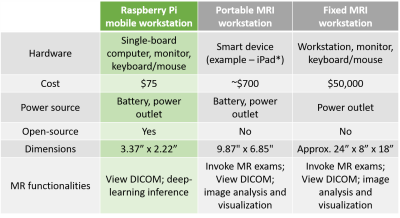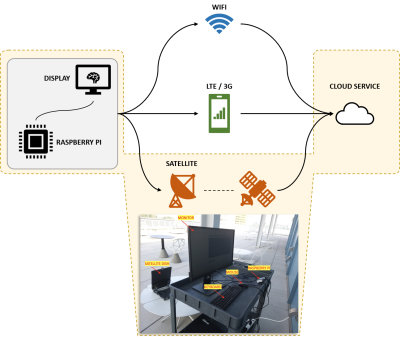Keerthi Sravan Ravi1,2, John Thomas Vaughan Jr.2, and Sairam Geethanath2
1Biomedical Engineering, Columbia University, New York, NY, United States, 2Columbia Magnetic Resonance Research Center, New York, NY, United States
1Biomedical Engineering, Columbia University, New York, NY, United States, 2Columbia Magnetic Resonance Research Center, New York, NY, United States
We implemented an optimized Tensorflow-Lite segmentation model on Raspberry Pi (RPi) reducing 75% disk space. Data was uploaded across three internet access methods including a satellite link. We also ran a DICOM viewer on RPi.

Figure 5. Comparing mobile and fixed workstations across six dimensions. The Raspberry Pi based mobile workstation (this work, first column) is the most affordable and most portable. *An example of a commercially available portable MRI workstation is from Hyperfine (https://hyperfine.io/).

Figure 2. Illustration of the three hardware setups discussed in this work. The Raspberry Pi was used in combination with keyboard/mouse and display monitor input/output peripherals. The three Internet connectivity modalities studied in this work are fixed broadband (WiFi), cellular broadband (3G/LTE) and satellite-link. Picture at the bottom is an example of the hardware setup highlighted in yellow.